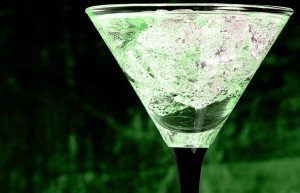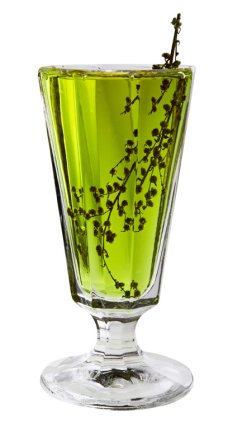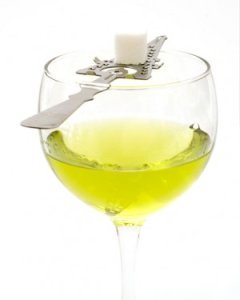The Green Fairy flutters its wings again
 Absinthe, the drink forever associated with bohemian Paris and its catalogue of late 19th century artists, poets and dangerous-living bons vivants, is at the heart of a fascinating revival.
Absinthe, the drink forever associated with bohemian Paris and its catalogue of late 19th century artists, poets and dangerous-living bons vivants, is at the heart of a fascinating revival.
It was a time of mystery and experimentation with Paris at its very heart. Sherlock Holmes was pursuing his imaginary nemesis Moriarty through the streets of East London just as Inspector Juve stalked the alleyways near the Place Pigale in search of the equally imagined but nonetheless formidable Fantomas. In nearby streets the poets, artists and would-be revolutionaries of the day met to plot, set the world to rights or simply to get drunk together.
Among the more sophisticated, absinthe was the poison of choice – a strong anise-flavoured spirit based on herbs. Among these was the much-feared Wormwood that was believed to endow the beverage with hallucinogenic qualities. The likes of Charles Baudelaire, Arthur Rimbaud, Oscar Wilde and Vincent van Gogh became devoted followers of absinthe, an inner circle as entranced by the exotic rituals of its consumption as in the pursuit of its effects.
 The Green Fairy
The Green Fairy
Although it is most definitely a spirit, absinthe soon attained the reputation, and indeed the terminology, of a drug. This was due to the powerful hallucinations it was believed to produce in those who succumbed to its intoxicating pull. Indeed, many a painter or writer soaked his spirit in the fluid in an attempt to set his creative genius free. Many were the acts of violence or madness attributed to this drug, though those who committed them were probably equally fuelled up on a whole shopping basket of hard liquors.
Over time, the suspicion grew, helped along by the secrecy and unorthodox rituals of those who consumed the drink, and their search for the ‘Green Fairy’ that would visit them when sufficiently intoxicated. While Edgar Degas depicted the less glamorous side of L’Absinthe, Paris’ bohemian set relished its relationship with this drink, concocting ever more fanciful ways of preparing it and communicating with la fée verte.
 The traditional method involves laying a sugar cube on a specially designed absinthe spoon across a glass with a tot-full of absinthe and pouring ice-cold water over it until the sugar has dissolved into the mix and the drink has gone from clear green to cloudy yellow-green. Later, ornate absinthe fountains were used for this, while puritans preferred the ‘Bohemian Method’, dousing the ice cube in alcohol and setting it alight before dropping it into the absinthe and eventually dousing it with cold water.
The traditional method involves laying a sugar cube on a specially designed absinthe spoon across a glass with a tot-full of absinthe and pouring ice-cold water over it until the sugar has dissolved into the mix and the drink has gone from clear green to cloudy yellow-green. Later, ornate absinthe fountains were used for this, while puritans preferred the ‘Bohemian Method’, dousing the ice cube in alcohol and setting it alight before dropping it into the absinthe and eventually dousing it with cold water.
Abolition and revival
By the 1910s absinthe’s reputation had grown so strong that it was abolished by law in most countries, including France. Though the drug-like characteristics of Wormwood have since been disproved, absinthe remained illegal for most of the 20th century, returning to production in the 1990s as bans were lifted and production fell under the supervision of European Union and US food agencies. Today’s varieties of absinthe, produced in countries like France and Switzerland, may be altogether safer than their 19th century equivalents, but the exotic methodology surrounding its consumption speaks to the imagination of a new generation of urban socialites who have taken this drink – and its new Paris parlours – to their hearts. Vive la fée verte.










